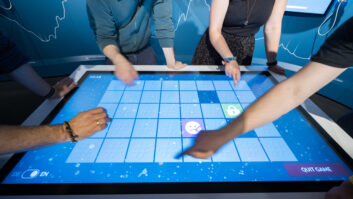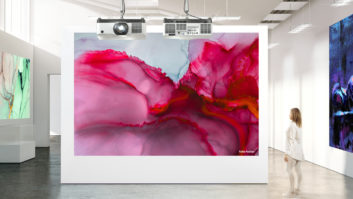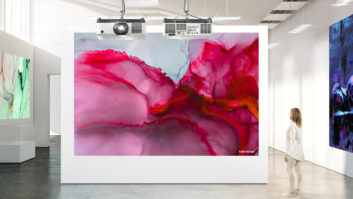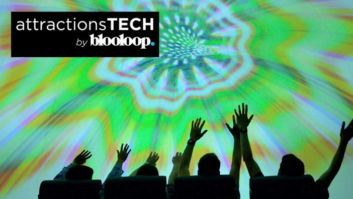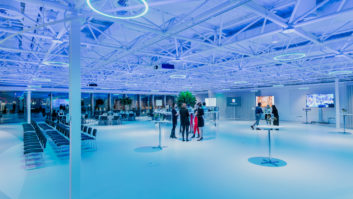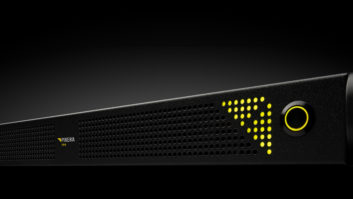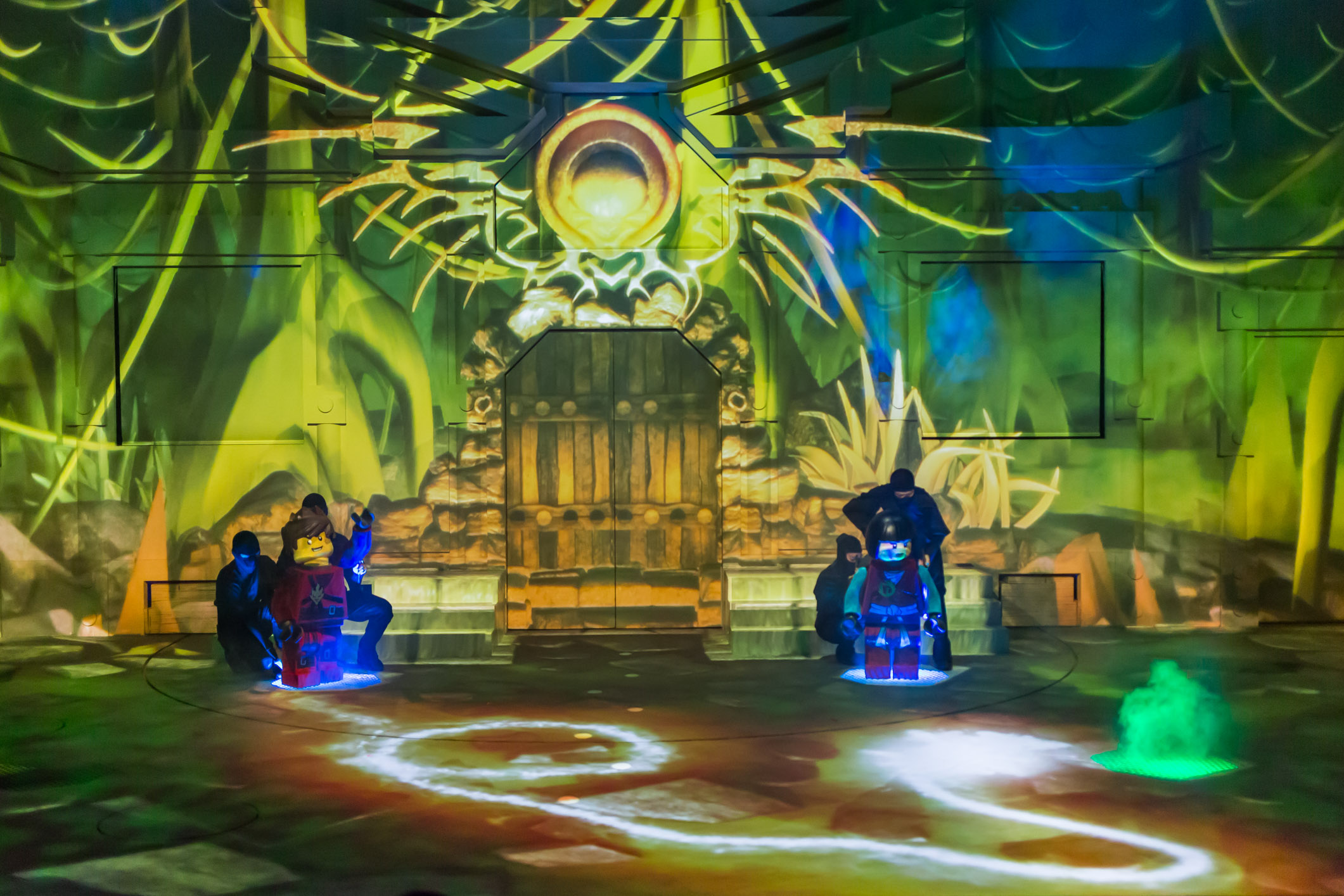
Theme parks’ need to maintain customer interest over repeat visits means that they have traditionally maintained notably cutting-edge technological infrastructures. As David Davies reports, that is still very much the case in 2016, with many attractions now working to implement fully integrated control and network infrastructures.
The reasons for theme parks historically being a focal point for groundbreaking AV work are many and varied, but Tobias Stumpfl – CEO of projection screen, media and control technology specialist AV Stumpfl – offers as concise a summary of the primary factors as one is likely to find. “Attractions are a good application to go for the most up-to-date AV equipment since they are built to impress visitors with a specific message,” he says. “AV equipment is used to boost this message because if an attraction is able to surprise visitors they will be excited.”
Indeed, it is arguable that – even more than leading concert venues, theatres and museums – theme parks must prioritise the use of the latest technology as part of their overall appeal to customers. After all, this is a sector that is by no means immune to broader economic effects – the downturn years of 2009-11 were challenging for theme parks in many countries – so it is no surprise to find that it has provided an important showcase for sophisticated media control, surround sound and immersive audio, ultra-high-resolution displays, and virtual or augmented reality.
With theme park attendance firmly in the ascendant once again (data released by the Themed Entertainment Association reveals that the top 25 such attractions saw a 4.1% increase in attendance in 2014, compared to the previous year), many locations also have a renewed ability to invest in emerging technologies – a number of which centre around more direct interaction with visitors.
Providing some useful context, Medialon’s North America sales manager, Eric J Cantrell, remarks: “Each park adds one or two attractions every year or so, and that’s good sustaining business. It’s not every day a new theme park is built, so when a new park is built, there is a great opportunity to offer new technologies that can take advantage of the fact that everything is new and there isn’t a need to support old infrastructure. They’re a clean slate, and designers can build smart, networked control systems that give operators better insight into the status of their equipment parkwide, which ultimately improves attraction uptime.”
Trond Solvold – sales manager at Dataton, whose Watchout multi-display system is a popular choice for theme park installations – echoes the forward-looking nature of the sector. “Our experience is that AV teams invest in keeping abreast of new technology, and are well informed about what other parks are doing,” he says. “They are keen to push technology into new realms, or applications, as long as the result is fully reliable. The visitor experience has to be mind-blowing every single time – downtime is simply not an option in a popular attraction or theme park.”
Control systems and ‘themed interactives’
As the myriad of AV components to be found in any given area of a theme park has become more extensive, so it follows that the control systems overseeing them have evolved in complexity – and so has their need to support tight and user-friendly integration. For many suppliers, this trend has underlined the wisdom of developing product ranges that support all sizes and shapes of control scenario.
“While we supplied solid-state control systems in the past, we [have since] become one of the only one-stop solution manufacturers,” says Stumpfl. “[Hence for such applications] we typically provide most of our portfolio, including media servers, control systems and video players, plus interfaces. Our advantage is that all this comes from one supplier, which means the integrator only has one point of contact in case of support and service.”
By way of example, Stumpfl points to a long association with attraction design giants Simworx, which recently deployed SC Master Controller at Angry Birds The 4D Experience, the centrepiece of a new 4,000sqm Angry Birds Zone at Thorpe Park, UK. The 3D film features specialised 4D effects, including water sprays, wind, bubbles, leg ticklers and seat motion – all controlled using SC Master.
For Alcorn McBride, theme parks constitute its “primary focus as a company”, and one that it caters to with an extensive range of AV player, lighting and show control products. In terms of show control systems – its most popular solutions along with video playback products – director of sales Scott Harkless confirms that “reliability, precise timing and ease of use” are key requirements.
“These products need to provide easy control of various entertainment-focused AV products like projectors, media servers, animatronic systems, lighting systems and audio DSP platforms,” he says. “We make this possible by providing an extensive library of drivers that provide universal-remote-like control of these devices. We eliminate complex aspects associated with device control like checksums, CRCs, hexadecimal vs ASCII, etc, and boil everything down to simple commands like ‘Power On’ and ‘Play’. Our show control architecture can then execute these events based on a precise timeline to ensure that everything is happening exactly when it is supposed to – day in and day out on a reliable hardware platform.”
The pressure on control infrastructures to perform seamlessly is only likely to increase given the additional elements set to be added in the coming years. The incorporation of advanced projection systems – with theme park attractions “pushing projection and playback technologies to higher frame rates, higher resolution, more lumens and uncompressed quality content” – is already well underway. In the longer term, Harkless thinks that we will see the rise of what he terms ‘themed interactives’.
“What I’m referring to is physical themed props that incorporate AV and other specialised electronics to provide a new type of experience,” he says. “The best example that comes to mind is the interactive wand systems in Universal’s Harry Potter-themed lands. For those who aren’t familiar with the concept, guests can purchase a wand and actually use it to ‘cast spells’ in designated areas of the themed land. My apologies to those that advocate the use of VR/AR in theme parks, but these types of interactives are what theme parks are all about. Why? Because unlike VR/AR, this is not something that you can experience in the comfort of your home. By definition, theme parks already offer guests the chance to explore a ‘virtual reality’ – one that is physical in nature, not electronic.”
www.alcorn.com
www.avstumpfl.com
www.dataton.com
www.medialon.com
